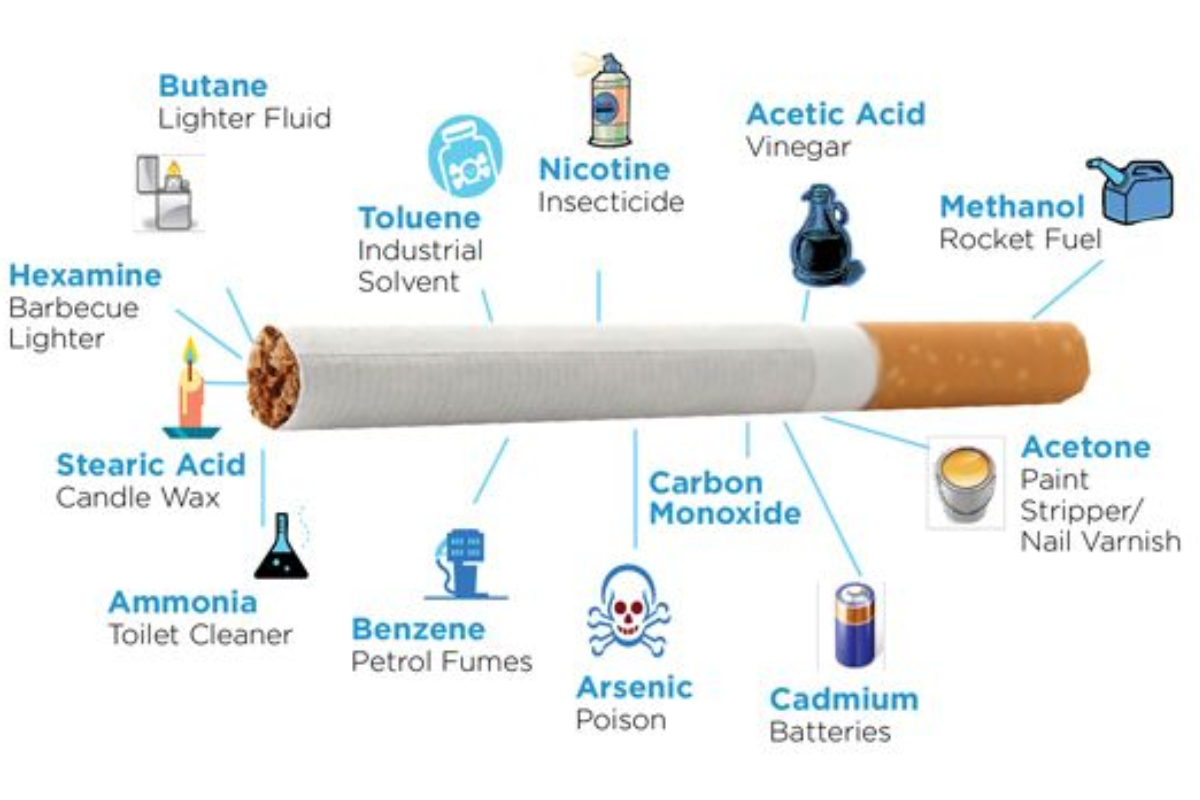Introduction: Understanding Nicotine Cravings
Nicotine cravings are strong urges that result from nicotine’s physical addiction, a highly addictive drug contained in tobacco. These can be very compelling making it hard for smokers to quit smoking. They often cause withdrawal symptoms ranging from mood swings and irritability to common phenomena like headaches and increased appetite. Understanding these cravings is crucial for anyone desiring to quit smoking completely.
Dr. John Richards, an expert in addiction and smoking cessation, reminds about the need for healthy options. “Nicotine replacement therapies and other non-tobacco products can help manage cravings without smoking implications hence aiding long-term cessation goals,” he says. It is important therefore that this section starts off by introducing alternative choices which make it possible for one to find ways out of nicotine addiction away from health risks associated with tobacco use.
This part intends to set a platform for those who are trying to find other ways of dealing with their urges by talking about their nature, consequences as well as the necessity to switch on healthier methods of managing them among the smokers.
The Role of Nicotine Replacement Therapy (NRT)
Nicotine Replacement Therapy (NRT) is an approved medical technique that reduces nicotine cravings and helps people stop smoking. NRT uses a small quantity of smoke to help reduce craving for cigarettes and the physical withdrawal symptoms caused by quitting. This method does not contain the harmful chemicals found in cigarettes, making it a safer alternative.
The most frequently used forms of NRT are nicotine patches, gum, and lozenges. Nicotine patches provide a steady release of nicotine throughout the day, thereby ensuring that there is a certain amount of this substance present in the bloodstream. This method is particularly useful for smokers who are accustomed to a constant background level of nicotine. “Nicotine patches copy cigarette’s consistent exposure to nicotine but avoid risks associated with tar inhalation and other poisonous substances,” says Dr. Emily Watson.
Nicotine gums and lozenges allow more freedom in handling cravings. These can be taken whenever feelings arise, thus enabling users to control their own nicotine intake throughout the day, giving them instant relief from wanting to light up again. “These short-acting forms of NRT are advantageous because they deal with sudden cravings as well as being customizable for each smoker, which makes them an adaptable tool,” adds Dr. Watson.
Smokers can use NRTs through which they can manage their withdrawal symptoms in a controlled manner hence increasing success rates of quitting smoking significantly. This approach does not only aid in cessation of smoking but also offers support in terms of helping smokers get rid off the psychological compulsion to smoke thus breaking away from this habit altogether.
Herbal Remedies as Healthy Alternatives
To stop smoking, herbal remedies can be used as a natural alternative to conventional cessation methods. Some herbs such as St. John’s Wort and ginseng have been studied for their potential to reduce cravings and help one quit smoking.
St. John’s Wort is widely employed for its mood-stabilizing properties but may also alleviate psychological withdrawal symptoms associated with quitting smoking. It has been suggested that this herb can alter neurotransmitter activity in the brain, similar to nicotine in the body, thus reducing withdrawal symptoms. Dr. Laura Benson, a specialist in herbal medicine says, “It’s shown some promise as a mood stabilizer and an anti-depressant which is often what happens when you try to quit smoking.”
Ginseng is another potent herb known for its fatigue-reducing abilities and ability to increase physical stamina which could benefit those who are struggling with the laziness associated with cessation. Ginseng also reduces dopamine release that results from nicotine hence making it less pleasurable when smoked. Dr. Benson clarifies further saying, ”by changing dopamine levels it might make cigarettes less satisfying such that smokers can then give them up.”
It is critical to talk about these matters of using herbs with your healthcare provider because they can interfere with medications and may produce side effects. There are different ways of preparing these remedies including teas, capsules, or tinctures each of which has differing degrees of success depending on how well they are absorbed and responded to by an individual.
Behavioral Strategies to Manage Cravings
Nicotine cravings can be managed through behavioral strategies, which greatly boost the efficiency of other cessation aids such as NRTs and herbals. The most effective methods in dealing with psychological aspects of nicotine dependence are techniques like mindfulness, meditation, and deep breathing exercises.
Recognition and acquiescence with intense desires while not giving into them is fostered by mindfulness and meditation. These actions teach smokers to approach their urges without judging themselves for having them, resulting in a possible reduction in the intensity and frequency of these cravings over time. “Mindfulness assists smokers to separate between craving as a physical sensation and smoking behavior thereby assisting people to gain control on how they respond to their cravings,” says clinical psychologist, Dr. Alan Peterson.
Deep breathing exercises too can be used during times when cravings become unbearable. Deep breathing also serves as an alternative for smoking; it leads to relaxation by involving deep inhales followed by an exhale similar to those taken during smoking, this mimics the act itself. “The purpose of deep breathing is that you have something else you can do immediately instead of picking up a cigarette that relieves stress and reduces the urge,” explains Dr. Peterson.
These behavioral strategies help in the immediate management of cravings as well as develop long-term responses to deal with stress, anxiety—common triggers for smoking. By integrating these activities into daily schedules, the process of quitting smoking can be made easier thus more manageable due to reduced fear especially mental health support (and health) generally improved.
The Impact of Physical Exercise
A regular workout helps to manage nicotine cravings and mitigate withdrawal symptoms. Participating in physical activity boosts the production of endorphins, naturally produced chemicals that make you feel good, thereby reducing depression and anxiety common during smoking cessation.
It is highly recommended one engages in cardiovascular exercises such as walking, running, cycling, or swimming since it increases lung capacity and blood circulation which are affected by smoking leading to some respiratory issues. These activities will take your mind off cravings and help to reduce the desire for smoking. Fitness expert Karen Sims suggests that “short periods of exercise can effectively distract people from craving a cigarette.”
Furthermore, strength training is another beneficial type of exercise that helps maintain overall muscle tone and strength which smokers usually neglect. According to Dr. Sims; “Strength training can be particularly empowering for former smokers, as it enhances their physical well-being and improves self-esteem which is crucial during the quitting process.”
Both yoga and Tai chi have physical as well as mental benefits. These practices involve deep breathing exercises characterized by slow deliberate movements which encourage relaxation thus relieving stress. They are most helpful for dealing with stress and anxiety that often leads to the need for nicotine.
Incorporating regular exercise into a quit-smoking program not only reduces the urge to smoke but also leads to better health by increasing stamina and improving life quality among other things. The holistic way of stopping smoking ensures improved physical fitness therefore reducing cravings more efficiently alongside emotional well-being improvements among other things.
Dietary Choices to Support Quitting Efforts
Diet’s role in controlling nicotine addictions and facilitating smoking termination is often minimized. During quitting, making wise choices while eating can greatly reduce the yearning for a smoke.
Water: More water should be taken. Nicotine inclusive toxins such as nicotine are flushed out faster through the aid of water. A nutritionist, Dr. Emily Green who specializes in addiction recovery explains that, “staying hydrated can help reduce the intensity of cravings and withdrawal symptoms, providing a natural way to flush out toxins.”
Nutritious meals: Eating fruits, vegetables, whole grains, and lean proteins helps to provide essential nutrients that are usually depleted by tobacco intake. Such diets also help to stabilize blood sugar levels after one has quit smoking up until they become steady enough to avoid causing nicotine cravings. According to Dr. Green, balanced meals assist in keeping stable energy levels and mood which play important roles in managing cravings.
Rich Antioxidant Foods: They include berries, nuts, and leafy green vegetables because they deal with oxidative stress caused by smoking. These antioxidants not only enhance immune function but also improve overall health which may be compromised among smokers.
Avoid High Sugar And Processed Foods: Reducing intake of sugary and highly processed foods is important since they can cause sugar spikes followed by dips which might trigger a craving for nicotine; “high-sugar foods can create a cycle of craving for food and low energy which smokers may confuse with withdrawal,” advises Dr. Green.
Making these changes in diet will foster an amicable environment within the body and mind during the struggle against dependence on nicotine. It is therefore imperative that good nutrition helps to manage cravings while at the same time improving the body’s ability to undo some of the damage caused by smoking.
Technology-Assisted Solutions
A revolution in the way individuals tackle nicotine cravings is happening due to technology being integrated into smoking cessation strategies. There are more and more popular apps and online programs that offer tools and resources to assist smokers on their journey towards a smoke-free life.
Smartphone Apps: there are many smartphone apps explicitly designed for those wanting to quit smoking. These characteristics permit these applications to keep track of smoke-free days, savings in finances, changes in health and also sharing progress on social media platforms. As argued by tech expert Dr. Linda Carter “Apps can give real-time support and are especially useful for managing cravings through sending motivational messages and tips to users to maintain engagement and focus on their goals.”
Online Programs: Various comprehensive online cessation programs are geared toward helping individual smokers on the basis of their habits. Such programs often come with chat or video call counselors, communities’ support forums, as well as tailored smoking cessation plans. According to Dr. Carter, “Online programs are advantageous because they can be accessed at any time from anywhere providing ongoing assistance which is very important during the first tough weeks of quitting.”
Wearable Technology: Furthermore, new developments in wearable technology also contribute to efforts made at smoking cessation. For instance, smartwatches plus fitness trackers monitor stress levels, advise on mindfulness exercises or even suggest engaging in physical activity when stress or craving is high.
These technology-based solutions use digital innovation to provide an all-rounded approach towards stopping tobacco consumption; hence cutting down the want for it but making its consumers constantly watched over and assisted in terms of their historical quitting process. This technological help is what will ensure one quits smoking successfully with long-term abstinence too as these various measures aid cravings reduction for a smoke-free journey while this device-driven backing necessary for reinforcing permanent renouncement from cigarette usage.
Common Questions About What Example Represents a Healthy Alternative to Curb Nicotine Cravings?
Are there herbal remedies that can reduce nicotine cravings?
Yes, some herbs like St. John’s Wort and Ginseng have been proven helpful in reducing nicotine desires. However, they work differently; some mimic the effects of nicotine on the brain while others work by relieving stress and anxiety which may lead to craving for nicotine.
What role does physical exercise play in relation to the craving for nicotine?
Physical exercises greatly help cut down on these cravings by significantly reducing withdrawal symptoms associated with breaking free from addictive substances, particularly tobacco. Engaging in activities such as jogging, cycling or walking briskly releases endorphins that improve mood thereby decreasing craving intensity hence making quitting easier.
Can eating certain foods facilitate quitting smoking?
Yes, incorporating a diet rich in fruits, vegetables, and whole grains while staying hydrated can help manage nicotine cravings. These types contain nutrients that maintain normal blood sugar levels reducing urge to smoke. It is also good to avoid high sugary snacks and caffeinated beverages during this period since they may cause one crave more than ever before.
How do smartphone apps assist in cessation of smoking?
Smartphone apps are useful as it tracks progress towards the goal of quitting smoking provides advice about dealing with cravings when they occur as well as offers encouragement not give up trying altogether. The people who use them are often provided with options like setting targets; recording what makes them start lighting up; connecting with other smokers on the internet.
Can mindfulness and meditation reduce nicotine cravings?
Yes, mindfulness is considered very helpful when it comes to curbing tobacco addiction. The awareness practices enable non-reactive methods for managing withdrawal symptoms thus improving psychological responses leading to reduced chances relapse.
What should I consider when choosing a healthy alternative to curb nicotine cravings?
In selecting a healthy smoking cessation replacement option, deal with your lifestyle, the level of physical dependence on nicotine, and your specific preferences. The best solution is to talk to health advisers who will help you in deciding the most secure and effective approach that will meet your personal goals.
Here are five scholarly articles related to healthy alternatives for curbing nicotine cravings, each providing unique insights into various cessation methods and their effectiveness:
- Pharmacological Approach to Smoking Cessation: This article reviews different pharmacological strategies that aid in smoking cessation, including nicotine replacement therapies and prescription medications that help reduce nicotine cravings and dependency.
- Impact of Tobacco and/or Nicotine Products on Health and Functioning: This scoping review assesses the effects of reduced-risk tobacco products and their role in harm reduction, offering insights into how switching to these products can impact health outcomes.
- Complementary Health Approaches for Smoking Cessation: This article from the National Center for Complementary and Integrative Health reviews various natural and complementary strategies, such as yoga, meditation, and acupuncture, for smoking cessation. While some studies show promise, the article highlights the need for further research to confirm their effectiveness.
- Quit Smoking: 6 Products to Strike Out Nicotine Cravings: This article discusses six different cessation products available in the United States, including prescription options like Varenicline and Bupropion, which are effective in reducing nicotine cravings and helping smokers quit.
- Foods for Nicotine Cravings: This article provides tips on dietary choices that can help manage nicotine cravings, emphasizing foods that are healthy and can serve as alternatives during quitting attempts.














